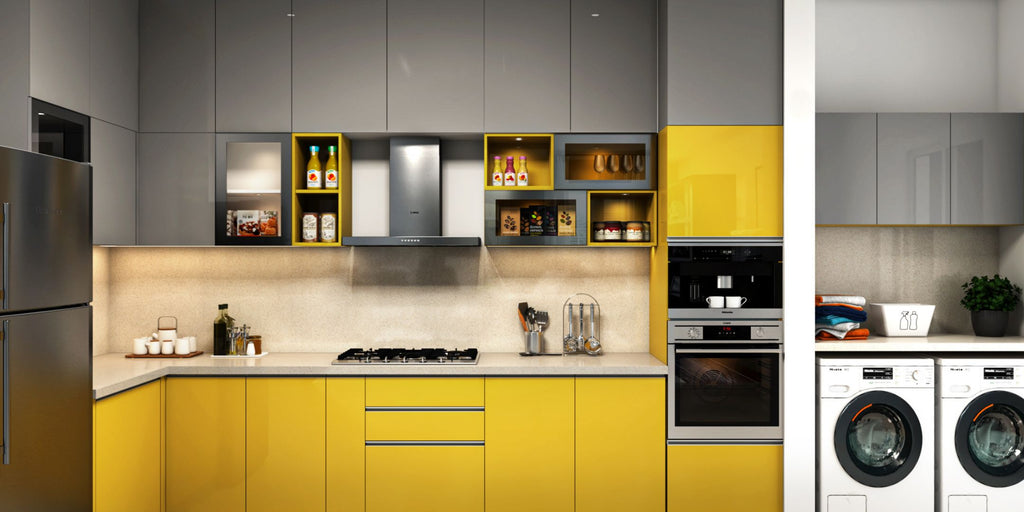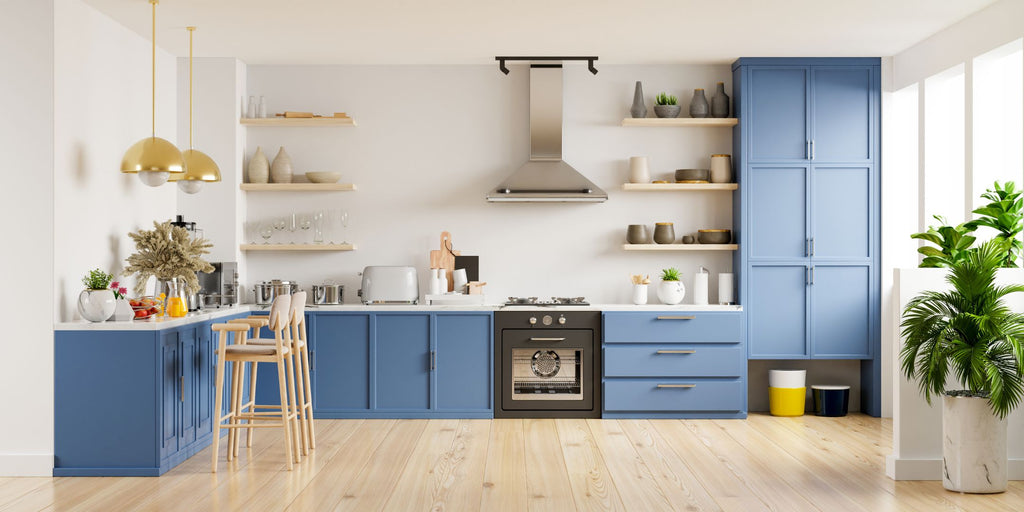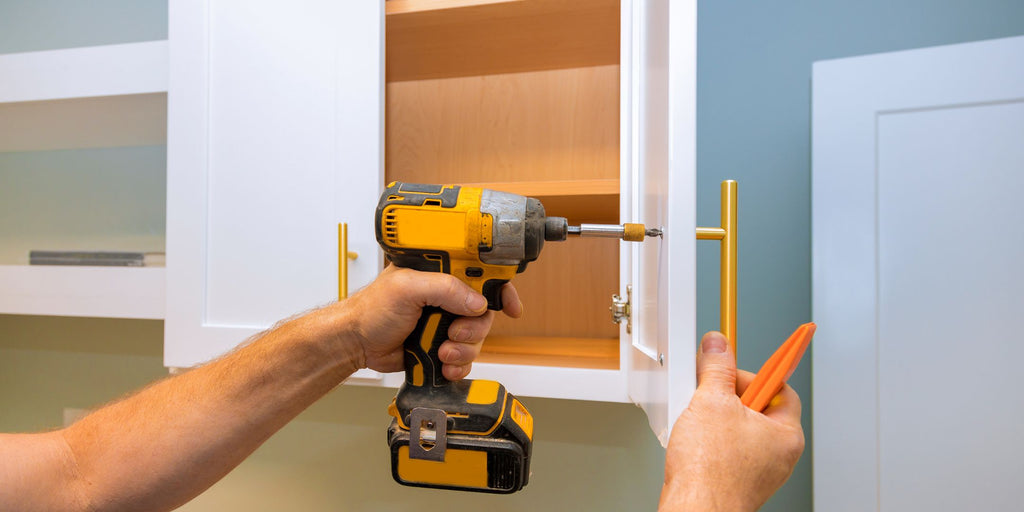When planning a kitchen remodel or starting from scratch, understanding the standard dimensions of kitchen cabinets is pivotal. It's not just about the space – it's about creating an environment where function meets design. So, let's dive deeper into the world of kitchen cabinet dimensions.
The Foundation of a Functional Kitchen

A kitchen is more than just a space to cook; it's where daily routines take shape, from morning coffee to late-night snacks. Ensuring each element is in harmony, starting with the kitchen cabinet dimensions, is vital to a kitchen that truly serves you.
Cabinets: The Backbone of Kitchen Design
Cabinets dictate the flow and functionality of a kitchen. They determine how easily you can access utensils, store groceries, and even the comfort with which you cook. Their dimensions, therefore, hold a paramount place in kitchen design.
Standard Dimensions: A Starting Point
While customisation reigns supreme in modern homes, standard kitchen dimensions offer a template:
- Base Cabinets: Usually 34.5 inches high and 24 inches deep. The width can range based on design.
- Wall Cabinets: Typically 12 inches deep, with a variable height range of 12 to 24 inches.
- Tall Cabinets: Commonly standing at 83.5 inches, but width and depth vary.
- Drawer Units: Standard sizes often hover around 5 inches in height for single drawers and 10 inches for doubles.
The Room for Personal Touch
Even with standard dimensions as a guide, there's a vast playground for those looking to add a personal touch. This includes cabinets of varying depths, pull-out solutions, or innovative corner units.
Beyond Measurements: Making Cabinets Work for You

Dimensions are a starting point. But the true essence of cabinet design lies in transforming these measurements into functional, aesthetic spaces.
The Art of Maximisation
A 12-inch cabinet might sound standard. But, with internal dividers, racks, or rotating solutions, its storage capacity can be revolutionised.
Adapting to Modern Needs
In the age of smart appliances and gadgets, modern cabinets should be designed to seamlessly integrate with technology, be it in-built ovens, coffee machines, or under-cabinet lighting.
Aesthetics in Dimensions
Remember, while functionality is key, aesthetics shouldn't take a back seat. Whether you opt for open shelving, glass-fronted units, or solid wood, ensure the design complements the kitchen theme.
Advanced Cabinet Insights for the Modern Home

The journey continues after understanding the basics of kitchen cabinet dimensions. As the heart of the home evolves, so do the nuances of design and functionality. Here, we explore advanced insights to elevate your kitchen space further.
The Rise of Sustainable Materials
In today's eco-conscious world, sustainable materials are taking centre stage. Bamboo, recycled wood, and other eco-friendly materials are increasingly used to craft kitchen cabinets. Not only do they reduce environmental impact, but they also introduce a unique aesthetic appeal.
Integrating Smart Technology
The modern kitchen is increasingly integrated with technology. Think cabinets with built-in charging ports for your gadgets or units with touch-sensitive opening mechanisms. These tech integrations go beyond mere convenience, revolutionising how we interact with our kitchen space.
Multi-functional Cabinets: Beyond Storage
Cabinets are no longer just storage units. Fold-out tables, pull-down racks, and integrated spice shelves turn cabinets into multi-functional spaces. These innovative designs ensure that every inch of the cabinet serves a distinct purpose, enhancing efficiency.
The Colour Palette Evolution
Gone are the days when kitchen cabinets were restricted to standard wooden hues. Today, bold colours, pastel shades, and even metallic finishes paint modern kitchens' canvas. This shift adds vibrancy and allows homeowners to infuse their personality into the space.
Expert Tips for Choosing the Right Cabinet Dimensions
Given the myriad of choices and evolving trends, making a decision can be overwhelming. Here are some expert tips to guide your cabinet dimension decisions:
Prioritise Ergonomics
Ensure that the cabinet dimensions complement your height and reach. For instance, frequently used items should be within arm's reach to prevent excessive bending or stretching.
Factor in Future Needs
While your current needs are essential, it's wise to factor in future requirements. If you foresee expanding your kitchenware collection or getting more appliances, ensure your cabinets accommodate these additions.
Seek Professional Guidance
While DIY is popular, consulting with a professional can provide insights you might overlook. They can offer tailored suggestions based on the standard dimensions of kitchen cabinets that best suit your space and needs.
Unravelling the Layers: Materials, Finishes, and Hardware
While dimensions are pivotal to function, the materials, finishes, and hardware of your kitchen cabinets significantly influence the aesthetics and longevity of the design. Dive into these nuanced elements that can transform your kitchen from ordinary to exceptional.
Choosing the Right Materials
Each material brings with it a unique set of characteristics:
- Plywood: Plywood is renowned for its sturdiness and ability to withstand moisture. It's a favoured choice for many homeowners due to its robust nature.
- Particleboard: Cost-effective and lightweight, though less sturdy than plywood.
- MDF (Medium-Density Fibreboard): Offers a smooth finish, making it excellent for painted cabinets.
Embracing Finishes and Textures
The finish you choose can dramatically alter the vibe of your kitchen:
- Laminates: Available in various colours and patterns, laminates are durable and easy to clean.
- Veneers: Thin slices of wood give your cabinets a natural, rich aesthetic, reflecting the true essence of wood.
- Acrylic: Provides a glossy, reflective finish, giving a contemporary touch to kitchens.
Hardware: The Cherry on Top
The knobs, pulls, and handles might seem trivial, but they can make or break your cabinet's overall look:
- Stainless Steel: Modern, durable, and versatile, these fit seamlessly into most kitchen themes.
- Ceramic: For those looking for a touch of vintage or country charm.
- Brass and Copper: Make a bold statement with these metals, particularly in kitchens with darker tones.
Maintenance: Ensuring Longevity of Your Cabinets

Given their frequent use, your kitchen cabinets require regular upkeep to ensure they stand the test of time.
Regular Cleaning
- Dusting your cabinets weekly prevents particle build-up.
- For deeper cleaning, a damp cloth with mild soap ensures your cabinets remain stain-free and vibrant.
Hardware Upkeep
Regularly check hinges, knobs, and pulls. Tighten any loose fixtures and consider periodic replacements to ensure smooth functionality.
Protection from Extreme Conditions
If positioned near windows, ensure your cabinets are shielded from direct sunlight to prevent fading. Similarly, adequate ventilation ensures cabinets aren't exposed to excessive moisture.
FAQs
What are the standard kitchen cabinet dimensions?
Standard kitchen cabinet dimensions encompass various aspects such as height, width, and depth. Base cabinets typically measure around 34.5 inches high and 24 inches deep. Wall cabinets are commonly 12 inches deep with adjustable heights ranging from 12 to 24 inches. Tall cabinets are about 83.5 inches high, but their width and depth vary.
How do I determine the appropriate kitchen cabinet height?
Determining the ideal kitchen cabinet height involves considering ergonomic factors and design preferences. Base cabinets are usually installed at a height that allows for comfortable countertop use, typically around 36 inches from the floor to the countertop surface. However, this height can be adjusted to suit individual needs and preferences.
What are the standard kitchen cabinet drawer sizes?
Standard kitchen cabinet drawer sizes can vary, but typically, single drawers are around 5 inches in height, while double drawers are about 10 inches in height. These dimensions provide sufficient space for utensils, cookware, and other kitchen essentials.
How should I take accurate kitchen cabinet measurements?
Taking accurate measurements is crucial when planning a kitchen remodel or installing new cabinets. Start by measuring the height, width, and depth of the space where the cabinets will be installed. Be sure to account for any obstacles or irregularities in the space. Double-check measurements to avoid errors before purchasing or installing cabinets.
What is the standard depth for kitchen cabinets?
The standard depth for kitchen cabinets is typically around 24 inches for base cabinets. Wall cabinets are commonly 12 inches deep, providing ample storage space without encroaching too much into the kitchen's floor area. However, customisation options are available to suit individual preferences and spatial constraints.
Conclusion
The world of kitchen cabinet dimensions is vast and dynamic. By merging standard guidelines with modern trends and personal preferences, you can craft a functional kitchen that reflects your style.
Megafurniture offers a curated collection that seamlessly blends design and function for those looking to elevate their home's aesthetics further.








